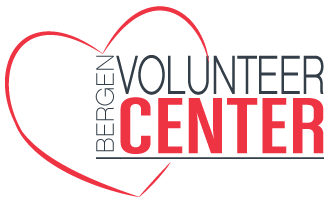




FAQ’s
Why is Making-It-Home Important?
Making-It-Home provides a critical missing “piece” for low-income individuals, children, and families who are leaving emergency shelter, further enabling them to live in a safe environment that improves their quality of life and ability to achieve greater self-sufficiency and a brighter future. The program ensures that those who are ready to make a fresh start are able to move into their new apartments knowing they will have basic furniture on which to sleep, sit, and eat. This essential ingredient helps complete the picture and “make their house a home.” It provides a safe, healthy and comfortable home environment that encourages people to secure and hold down a job, their children to achieve in school, and individuals and families to thrive.
Another unique aspect of our model lies in the way we are working together to solve not only the problems related to housing and homelessness, but also environmental concerns about the disposing of unwanted furniture into our landfills. Our constellation of partners includes generous donors who, at their own expense, seek to recycle their unwanted furniture and, most important, give it to people who can truly benefit. In the same fashion, clean out services do their part for the environment by alerting us to furniture they’ve acquired for disposal and volunteering their time to deliver it to our warehouse.
How Does Making-It-Home Operate?
Furniture Donations. Making-It-Home accepts donated new and very gently used furniture from several key sources – individuals and families (who are downsizing, moving or have other reasons to donate furniture); clean out companies (who donate items obtained from the customers); interior decorators (who donate client-rejected items); and furniture stores (who have excess and/or slightly damaged inventory). In addition, our program works with realtors and professional organizers (who typically recommend resources for donating unwanted furniture), moving companies (who typically receive unwanted furniture as part of a move), and other marketing channels that provide referrals to Making-It-Home.
Making-It-Home confirms the donation of home furnishings after reviewing photos and dimensions to ensure that they are appropriate for the target population. When a donation is confirmed, the program works with the donor to arrange a pick-up date and time. In many cases it is possible to coordinate with a donor’s clean out or moving company to transport the furniture to our warehouse.
A staff member from Making-It-Home is present at each pick-up. We provide donors with a tax deduction letter as well as a donation envelope and suggested amount so that they may help defray the expense of operations.
Transporting Furniture to Clients. Each month, Making-It-Home receives client referral forms from a number of government and nonprofit agencies. The forms indicate formerly homeless people who have rented apartments and the date when they are moving from emergency shelter. We then reach out to each case manager and client to discuss his/her need for furniture and the details of the move.
When the specific needs are determined, Making-It-Home staff select the appropriate items from inventory at the warehouse and arrange to have it transported to the client. The program works with a corps of volunteers who have the vehicles and “muscle” to help deliver the furniture – moving companies, police officers and fire fighters, service groups (e.g., Rotary, Boy Scout troops), and individuals. These volunteers often help with picking up donated furniture as well. When volunteers and vehicles are identified, Making-It-Home staff coordinate with the client to determine a mutually agreed upon date and time for delivery. A staff member accompanies each pick-up at the warehouse and delivery at the client’s new apartment. Making-It-Home staff work with each client to arrange the furniture and decorate his or her new space.
How Did Making-It-Home Get Started?
Making-It-Home began as a small pilot project. In 2014, Making-It-Home founder, Cynthia Massarsky, worked with Rebuilding Together and Bob’s Discount Furniture to furnish a living and dining room for a family in Moonachie whose home had been destroyed by Super Storm Sandy. In 2015, she worked with Bergen County’s United Way to create and run a town-wide fundraising campaign, which included a one-of-a-kind online gift registry, and to furnish the living areas in six apartments and a community room in Tenafly for people with developmental disabilities. In the spring of 2016, Making-It-Home became an official program of the Bergen Volunteer Center.
Who Leads the Program?
Cynthia Massarsky runs the Making-It-Home program. She has a long history of work at the intersection of the public and private sectors, where she has been at the forefront of the social enterprise, entrepreneurship, and CSR movement for nearly 40 years.
Christine Schwake, program manager, helps coordinate and implement all aspects of the initiative, especially furniture donations (cschwake@bergenvolunters.org)
For more information about donating furniture, helping us transport furniture, joining our corporate employee volunteer program, or becoming a Making-It-Home sponsor, please contact Cynthia.
Cynthia Massarsky, Director
201.489.9454 x 219 (office)
201.803.4608 (cell)
cmassarsky@bergenvolunteers.org
SEARCH
Contact Us
Bergen Volunteer Center
64 Passaic Street
Hackensack, NJ 07601
201-489-9454
FAQS




